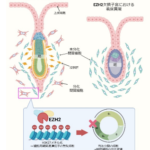2023-05-16 ワシントン大学セントルイス校
◆この非侵襲的で非薬理学的な手法は、脳疾患の研究や治療に応用できる可能性があります。今後は、アルツハイマーやパーキンソン病などの神経変性疾患に対してこの手法を利用する研究が行われる予定です。
<関連情報>
- https://source.wustl.edu/2023/05/insight-into-brains-waste-clearing-system-may-shed-light-on-brain-diseases/
- https://www.pnas.org/doi/10.1073/pnas.2212933120
マイクロバブルと超音波を併用したリンパ管輸送の機械的操作について Mechanically manipulating glymphatic transport by ultrasound combined with microbubbles
Dezhuang Ye, Si Chen, Yajie Liu, Charlotte Weixel, Zhongtao Hu, Jinyun Yuan, and Hong Chen
Proceedings of the National Academy of Sciences Published:May 15, 2023

Significance
The glymphatic system is a waste clearance system in the brain analogous to the lymphatic system in peripheral organs. Glymphatic system impairment might contribute to brain disease pathologies, including those in neurodegenerative diseases, traumatic brain injury, and stroke. This study revealed that ultrasound could mechanically enhance glymphatic transport. This discovery opens opportunities for using ultrasound to probe the role of the glymphatic system in brain function and brain diseases. Findings from this study suggest that ultrasound can be utilized as a noninvasive and nonpharmacological approach to mitigate brain diseases caused by impaired glymphatic function.
Abstract
The glymphatic system is a perivascular fluid transport system for waste clearance. Glymphatic transport is believed to be driven by the perivascular pumping effect created by the pulsation of the arterial wall caused by the cardiac cycle. Ultrasound sonication of circulating microbubbles (MBs) in the cerebral vasculature induces volumetric expansion and contraction of MBs that push and pull on the vessel wall to generate a MB pumping effect. The objective of this study was to evaluate whether glymphatic transport can be mechanically manipulated by focused ultrasound (FUS) sonication of MBs. The glymphatic pathway in intact mouse brains was studied using intranasal administration of fluorescently labeled albumin as fluid tracers, followed by FUS sonication at a deep brain target (thalamus) in the presence of intravenously injected MBs. Intracisternal magna injection, the conventional technique used in studying glymphatic transport, was employed to provide a comparative reference. Three-dimensional confocal microscopy imaging of optically cleared brain tissue revealed that FUS sonication enhanced the transport of fluorescently labeled albumin tracer in the perivascular space (PVS) along microvessels, primarily the arterioles. We also obtained evidence of FUS-enhanced penetration of the albumin tracer from the PVS into the interstitial space. This study revealed that ultrasound combined with circulating MBs could mechanically enhance glymphatic transport in the brain.


